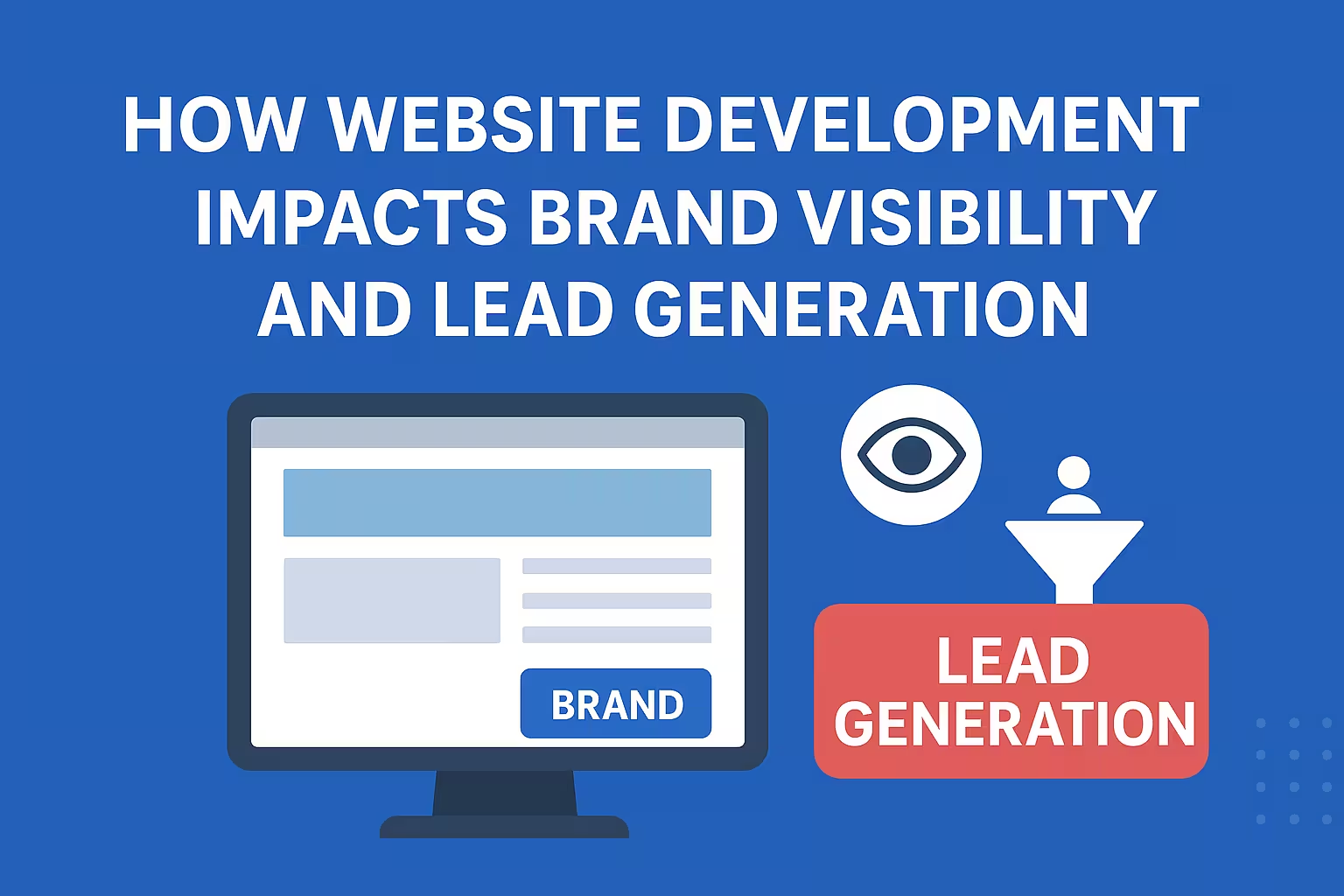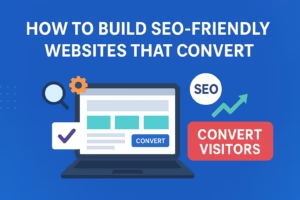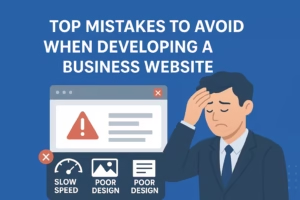How Website Development Impacts Brand Visibility and Lead Generation
Introduction
In today’s competitive marketplace, a business without a website is like a shop without a signboard. But simply having a website isn’t enough. The way your website is developed can make or break your brand visibility and lead generation efforts.
When I first built websites for small businesses, I noticed something interesting. Two companies in the same niche, with the same budget, could have completely different results depending on how their websites were built. The one with poor design, slow speed, and confusing navigation struggled to get leads. Meanwhile, the one with strategic development choices gained credibility, traffic, and consistent sales.
This is the power of website development done right. It’s not just coding—it’s shaping how people perceive your brand and whether they decide to trust you.
Let’s dive into how website development directly impacts your brand visibility and lead generation.
The Role of Website Development in Branding
Your website is your digital storefront. Just as a physical store reflects a brand’s image, your site reflects your business identity.
-
A sleek, modern design signals professionalism.
-
Creative layouts can showcase innovation.
-
Consistency in design builds brand recall.
💡 Personal Tip: Always think of your website as an extension of your brand. If your offline presence is premium and professional, your site should echo that—not look outdated.
First Impressions Matter
Studies show visitors form an impression of your site in less than 1 second. That first impression determines whether they stay or bounce.
Imagine you’re searching for a financial advisor. You click on two websites:
-
One loads fast, has a clean homepage with trust signals, and clear contact details.
-
The other looks outdated with broken images and cluttered text.
Who would you trust with your money? Exactly.
Example: A client in the healthcare sector saw a 45% drop in bounce rate after we redesigned their homepage with cleaner visuals and a clear CTA (“Book Your Consultation Today”).
The Connection Between Web Design and Trust
Trust is a currency online, and web development decisions either build it or break it.
What inspires trust?
-
A professional design
-
Easy-to-find contact details
-
Testimonials and case studies
-
Secure browsing (HTTPS)
💡 Personal Tip: Add a “Why Choose Us” section with real customer feedback. People trust people, not faceless brands.
SEO-Driven Development
SEO isn’t just content—it begins at the development stage. Clean coding, proper headings, schema markup, and optimized images all impact search engine visibility.
Example: One of my clients had a beautiful website but poor search rankings. The problem? Bloated code and missing schema. After optimizing the backend, their site moved from page 5 to page 1 for key terms in just a few months.
Website Speed and Brand Perception
Slow websites kill both visibility and conversions. Google penalizes them, and users abandon them.
-
1-second delay can reduce conversions by 7%.
-
3-second delay increases bounce rates by 32%.
💡 Personal Tip: Use lightweight themes and avoid unnecessary plugins. I once reduced a client’s load time from 8s to 2s just by removing unused scripts.
Mobile-Friendly Development
With mobile searches dominating, responsive design is no longer optional—it’s mandatory. Google ranks mobile-first, and users expect seamless browsing.
Example: A restaurant site I redesigned became mobile-friendly, and online reservations jumped by 30% within weeks.
Navigation and User Experience
Good navigation is like a roadmap. If users can’t find what they want, they’ll leave.
Elements of good UX:
-
Clear menus
-
Breadcrumbs
-
Logical flow
-
Search functionality
💡 Personal Tip: Watch how new visitors use your site. If they struggle, simplify the navigation.
The Role of Content in Brand Visibility
Content isn’t just text—it’s your brand’s voice. Well-developed websites integrate blogs, guides, and resources that rank on search engines and establish authority.
Example: A fitness coach I worked with added a blog section. Within six months, her “healthy meal plans” articles ranked on Google and brought in hundreds of qualified leads.
Integrating Brand Identity into Web Design
Your website should look and feel like your brand.
-
Use brand colors consistently
-
Match typography with your brand’s tone
-
Add brand stories to build emotional connection
Building for Local SEO
If you’re a local business, development should focus on local SEO features like location-based landing pages, Google Maps integration, and structured data.
Example: A local salon optimized its site with location keywords and Google Maps. Result? A 70% increase in walk-ins from “near me” searches.
Lead Generation Through Web Design
Your website isn’t just for visibility—it should convert visitors into leads.
How?
-
Strong CTAs (buttons that stand out)
-
Clear value propositions
-
Simple lead capture forms
Call-to-Actions That Work
CTAs guide users to take the next step. Effective CTAs are:
-
Visible
-
Action-oriented (e.g., “Get My Free Quote”)
-
Placed at the right spots
💡 Personal Tip: Test different CTA colors. For one client, switching from blue to orange increased sign-ups by 25%.
Landing Pages for Lead Generation
Dedicated landing pages convert better than generic homepages. They focus on one goal, such as downloads or consultations.
Example: A SaaS client saw conversions double after we built a custom landing page for a free trial instead of sending traffic to the homepage.
Forms and Lead Capture Strategies
Complicated forms scare users away. Keep them short and simple. Ask only what’s necessary.
💡 Personal Tip: Offer incentives like free eBooks or discounts in exchange for emails.
Using Chatbots and AI for Engagement
AI-powered chatbots can capture leads 24/7. They guide users, answer FAQs, and push them toward actions.
Example: Adding a chatbot on a client’s e-commerce store boosted inquiries by 40%.
Case Study Example
One of my clients, a boutique travel agency, had a basic outdated site. After a full redevelopment—fast loading, modern design, mobile-friendly pages, integrated booking forms—they saw:
-
3x more traffic
-
2x more inquiries
-
Stronger brand recognition
Website Analytics and Insights
A well-developed site integrates Google Analytics and Search Console. These tools track what’s working and what’s not. Without data, you’re flying blind.
Conversion Optimization in Development
Lead generation doesn’t happen overnight. It requires continuous A/B testing. Test CTAs, forms, layouts, and headlines until you find what works best.
The Importance of Secure Websites
Users hesitate to share personal data on non-secure sites. Always use HTTPS. It’s a trust factor and a Google ranking factor.
Social Media Integration
Seamless integration with social media improves brand visibility. Add share buttons, live feeds, and clickable profiles.
E-commerce and Lead Generation
For online stores, product page development impacts conversions. Clear images, trust badges, and smooth checkout flow are critical.
Future Trends in Website Development
Looking ahead:
-
AI personalization will tailor content to each user.
-
Voice search optimization will dominate.
-
Progressive Web Apps (PWAs) will replace traditional apps.
Common Mistakes to Avoid
-
Slow, bloated websites
-
Poor mobile optimization
-
Hidden CTAs
-
Ignoring analytics
Conclusion
Website development isn’t just about aesthetics or coding—it’s about creating a digital platform that increases brand visibility and generates consistent leads. With the right mix of SEO, UX, and CRO, your website can transform from a static page into a powerful growth engine.
FAQs
Why is website speed important for brand visibility?
Because a slow website frustrates users and makes your brand look unprofessional.
How does web design affect lead generation?
Good design builds trust and guides visitors toward CTAs, increasing conversions.
Do small businesses really need mobile-friendly sites?
Absolutely! Most searches today come from mobile devices.
What’s the role of content in visibility?
Content helps you rank higher and educates users about your expertise.
Are landing pages better than homepages for leads?
Yes, because they focus on one clear conversion goal.
How often should I update my website?
At least once every year for design and continuously for content and SEO.







